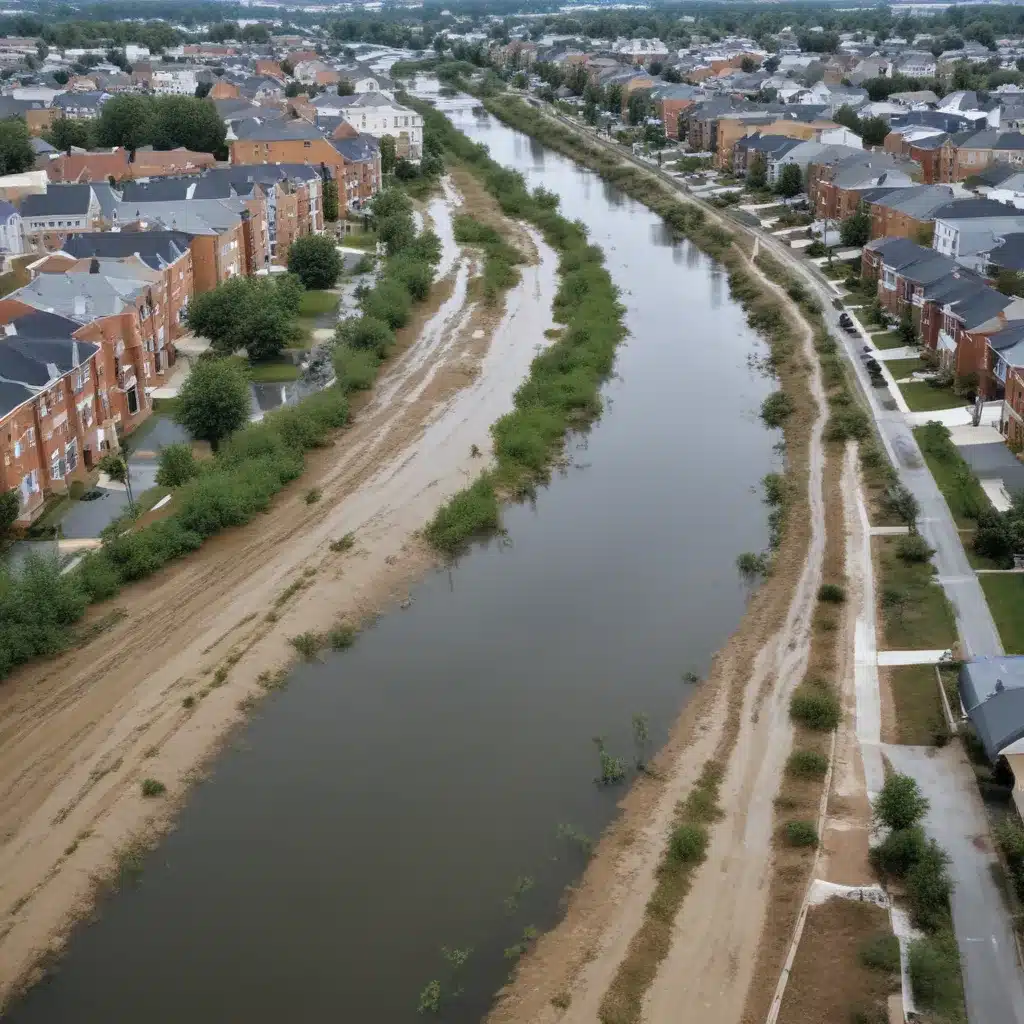
Urban areas across the globe are facing mounting challenges in managing the growing risks of flooding. We learned this the hard way… As cities expand and climate change brings more extreme weather, traditional stormwater infrastructure often struggles to keep up. Integrating innovative flood control strategies into holistic water management is essential for building resilient, sustainable communities.
Now, this might seem counterintuitive…
Flood Risk Assessment
The first step in developing effective flood management solutions is conducting a thorough flood risk assessment. This involves a detailed hydrological analysis to understand the area’s precipitation patterns, surface runoff, and potential flood sources. Geographic information systems (GIS) can then be leveraged for geospatial mapping of flood-prone zones, critical infrastructure, and vulnerable populations.
By combining hydrological data with spatial analyses, cities can evaluate the vulnerability of different neighborhoods and assets. This enables targeted interventions and helps prioritize high-risk areas. Factors like topography, impervious surfaces, and proximity to waterways all influence the severity and likelihood of flooding. Regular updates to these risk assessments are crucial as urban landscapes and climate conditions evolve over time.
Flood Control Infrastructure
Traditional levee design and construction remains a core component of flood mitigation efforts. However, modern levee systems incorporate more flexibility, such as adjustable connectors and gates that can be operated to manage water flow. This allows excess water to be diverted during intense rainfall events, helping prevent overtopping and protect critical infrastructure.
Complementing levees, floodwalls provide another important line of defense against rising water levels. These physical barriers can be strategically positioned to shield vulnerable neighborhoods and assets. Innovative floodwall designs now feature advanced features like automated control systems, further enhancing their effectiveness.
In addition to structural barriers, detention basins play a vital role in managing stormwater runoff. These engineered depressions temporarily store excess water during heavy rains, gradually releasing it to prevent downstream flooding. Careful basin design and placement can optimize their capacity and functionality.
Urban Water Management
Conventional stormwater drainage systems relying solely on pipes and culverts often struggle to keep up with the increasing volume and intensity of rainfall in urban areas. Integrating permeable surfaces can significantly improve stormwater management by allowing water to infiltrate the ground instead of running off into overburdened drains.
Permeable pavements, constructed with porous materials like interlocking pavers or pervious concrete, offer an effective solution for urban settings. They not only reduce runoff but can also minimize the need for road salt, as water does not pool and freeze as readily. Additionally, permeable surfaces can lower construction costs by reducing the size and scale of traditional stormwater infrastructure.
Complementing these permeable solutions, green infrastructure techniques leverage natural processes to manage urban flooding. Bioretention systems, for instance, use vegetated basins to filter and slow down stormwater runoff, allowing it to be gradually absorbed into the ground. Native plant species with deep roots enhance these systems’ effectiveness by improving soil permeability and pollutant removal.
Emergency Flood Response
Comprehensive evacuation planning and disaster preparedness are essential for mitigating the impacts of severe flooding events. Cities might want to identify vulnerable populations, establish clear communication channels, and coordinate emergency response protocols. Regular drills and public awareness campaigns can help double-check that residents are prepared to act quickly when necessary.
In the aftermath of a flood, post-flood recovery efforts might want to address both immediate needs and long-term resilience. Restoring critical infrastructure, providing temporary housing, and assisting affected businesses and households are all crucial steps. Leveraging lessons learned can inform future improvements to emergency management plans.
Regulatory Frameworks
Effective flood mitigation policies and environmental regulations play a vital role in guiding urban water management and infrastructure development. Zoning ordinances, building codes, and stormwater regulations shape the incorporation of flood control measures into new construction and redevelopment projects.
Engaging the community through public outreach and stakeholder involvement is crucial for ensuring flood management strategies align with local needs and priorities. Fostering collaboration between government agencies, engineering firms, and residents can lead to more holistic, sustainable solutions.
Modeling and Simulation
Advancements in hydrological modeling and climate change projections enable cities to better anticipate future flood risks. By simulating various scenarios, planners can identify vulnerabilities and test the effectiveness of proposed flood control measures. This data-driven approach supports scenario-based planning for more resilient urban development.
Integrating real-time monitoring and artificial intelligence (AI) into stormwater management systems can further optimize flood control operations. Automated valves, sensors, and AI-powered decision-making can dynamically adjust water flow to maximize the efficiency of green infrastructure during changing weather conditions.
Interdisciplinary Collaboration
Addressing the complex challenges of urban flooding requires interdisciplinary collaboration among diverse stakeholders. Engineers, urban planners, environmental scientists, and emergency management professionals might want to work together to develop comprehensive, multilayered solutions.
Fostering cross-departmental coordination within local governments is essential for ensuring flood risk is consistently integrated into infrastructure planning, land use decisions, and emergency response strategies. Establishing public-private partnerships can also unlock additional resources and innovative approaches to flood management.
Sustainable Development
Ultimately, the path to building flood-resilient cities lies in adopting resilient urban design principles and ecosystem-based approaches. Integrating green infrastructure, such as constructed wetlands and hybrid green-blue roof systems, can enhance stormwater management while providing additional co-benefits like improved air quality, habitat creation, and urban heat island mitigation.
By aligning flood control strategies with broader climate adaptation efforts, cities can develop more sustainable, long-term solutions. This holistic approach, centered on the principles of resilience and ecosystem services, will be crucial for safeguarding vulnerable communities and ensuring their prosperity in the face of increasingly unpredictable weather patterns.
To learn more about the latest flood control technologies and best practices, visit Flood Control 2015.
Example: Manchester Advanced Flood Control Project 2024















